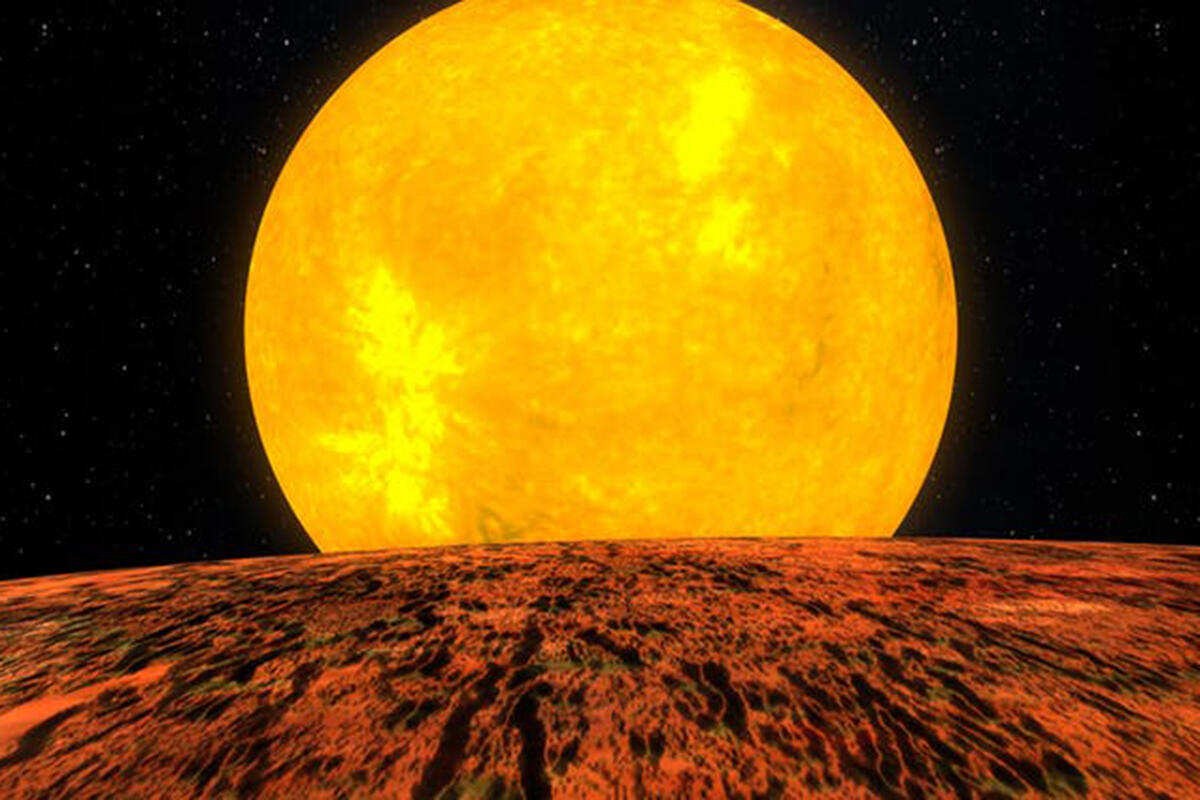What is beyond Earth, the moon, or even our solar system? UNLV has dozens of faculty and students uncovering the many mysteries of space that lie beyond our small piece of the universe.
Among the most fascinating curiosities of the cosmos are planets residing outside our solar system, known as exoplanets. Next week, the largest group of exoplanet researchers and academics ever assembled will meet at the M Resort in Las Vegas, and UNLV will be well represented.
More than a dozen UNLV faculty, students, and postdocs will participate May 1-6 in Exoplanets IV, an international conference that began in Switzerland in 2016 and has grown each year since. UNLV astrophysicist Jason Steffen, one of the world’s leading exoplanet scholars, chairs the conference organizing committee and was instrumental in bringing the event to Las Vegas.
“It’s an exciting time for the field to be back in person, and we’re looking forward to showcasing the talents we have here at UNLV,” said Steffen.

Among the conference’s featured speakers is Zhaohuan Zhu, a UNLV astrophysicist whose work combines sophisticated computer modeling and observations to reveal the secrets of how new planets are born around young stars. In 2021, Zhu and colleagues earned funding from NASA to further this research into planet formation.
“I hope the conference can bring light to the strong and growing astronomy community here at UNLV, lead to opportunities for these young talents to become future leaders in the field, and also attract even more students to consider UNLV.”
We caught up with Zhu to learn more about his research and get a preview of his upcoming talk.
Tell us about your work on planet formation.
My goal is to understand how our Earth and other Earth-like planets formed billions of years ago. Although the planetary nursery, or protoplanetary disk, is long gone in our own solar system, similar planetary nurseries still exist in other young stellar systems which can be observed by astronomers. These protoplanetary disks at the beginning of star formation create ideal conditions for planet formation.
My group uses computers to simulate these protoplanetary disks, and compare the simulations with real life observations from astronomers to learn more about planet formation processes.
What’s been your most gratifying contribution thus far to the field of exoplanet research?
My primary focus is on the observational signatures of young planets in protoplanetary disks. These signatures help to identify these forming planets beyond our solar system. This includes both indirect signatures, such as disk features (spirals, gaps, and crescents) induced by planets, and direct signatures, such as circumplanetary disks and planetary envelopes around young planets.
This conference is expected to welcome its largest-ever group of scientists. How has the field of exoplanet research – and your own work – evolved?
When I was a graduate student, protoplanetary disks were fuzzy blobs in astronomical observations. As a theorist, I had developed these detailed physical pictures in my mind and always wondered how I could verify my physical picture from the observations.
Over the past decade, the observations have advanced so much due to big advances in technology. Now, we are spatially resolving the disks with hundreds of pixels. It is like you were watching a black-and-white movie in the 70’s, but suddenly within ten years you are watching it in 4K.
We are now flooded with new observations. And as a theorist, we constantly come up with new theories to explain these observations, and the theory can be tested in a few months. This interaction between observations and theory is so exciting and you can feel the field advancing every day.
Conference Details: The American Astronomical Society’s Exoplanets IV conference will be held May 1-6 at the M Resort in Las Vegas.



